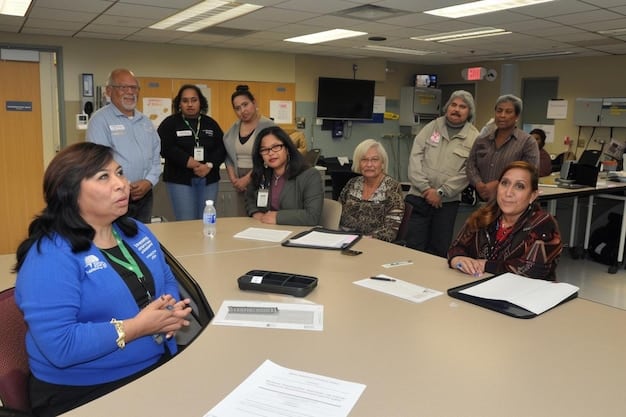States Facing Deadline for New Federal Education Standards

The impending deadline for states to implement new federal education standards represents a crucial juncture for the future of American schools, demanding swift and strategic action to ensure compliance and enhance student outcomes across diverse learning environments nationwide.
The landscape of education in the United States is perpetually evolving, shaped by a complex interplay of policy, pedagogy, and societal demands. A significant development currently commanding attention is the time-sensitive deadline for states to implement new federal education standards. This imperative underscores a critical moment for educational leaders and policymakers, as they navigate the complexities of adopting comprehensive changes designed to elevate the quality and equity of learning experiences nationwide.
The Origin and Evolution of Federal Education Mandates
Federal involvement in education, particularly concerning standards, has a long and often contentious history. From early initiatives aimed at bolstering scientific and mathematical prowess during the Cold War to more recent sweeping reforms, the federal government has consistently sought to influence educational outcomes. The current push for new standards arises from a recognized need to address persistent achievement gaps and prepare students for an increasingly complex global economy.
The Every Student Succeeds Act (ESSA) of 2015 marked a significant shift, replacing the No Child Left Behind Act. ESSA aimed to return more decision-making authority to states and local districts while still ensuring accountability for student achievement. Under ESSA, states are required to develop plans that address challenging academic standards, annual testing, school accountability systems, and support for struggling schools. The deadlines for these state plans are deliberately structured to ensure timely implementation and oversight.
From NCLB to ESSA: A Paradigm Shift
The transition from the highly prescriptive No Child Left Behind Act to the more flexible ESSA represented a notable pivot in federal education policy. While NCLB was criticized for its emphasis on standardized testing and punitive measures, ESSA sought to provide states with greater autonomy. This autonomy, however, comes with significant responsibilities, particularly regarding the development and execution of robust education plans.
- ✅ Increased State Autonomy: ESSA grants states more flexibility in designing accountability systems.
- 🗓️ Defined Deadlines: Despite flexibility, critical implementation deadlines are federally imposed.
- 🤝 Broad Stakeholder Engagement: States must involve diverse groups in their plan development.
- 📊 Focus on Multiple Measures: Beyond test scores, ESSA encourages a holistic view of school performance.
Ultimately, the evolution of federal mandates reflects an ongoing effort to strike a balance between national educational goals and the unique needs of diverse state and local contexts. The current deadline serves as a potent reminder of this evolving framework, pushing states to critically evaluate and refine their educational ecosystems.
Understanding the Current Federal Standards and Their Aims
The new federal education standards under ESSA are not a one-size-fits-all curriculum dictating what every child should learn daily. Instead, they operate as a framework, setting expectations for academic proficiency across core subjects and requiring states to establish coherent systems to achieve these goals. The primary aim is to ensure all students, regardless of their background or location, receive a high-quality education that prepares them for college, career, and civic life.
These standards typically emphasize several key areas:
Academic Rigor: Promoting challenging academic content that encourages critical thinking, problem-solving, and analytical skills. This moves beyond rote memorization towards deeper understanding and application of knowledge.
Equity and Access: Addressing persistent disparities in educational outcomes by focusing on subgroups of students, including those from low-income families, students with disabilities, English language learners, and students of color. This involves targeted interventions and support systems to close achievement gaps.
Accountability Systems: Requiring states to develop transparent accountability systems that measure school performance using a variety of indicators. While standardized test scores remain a component, ESSA encourages the inclusion of other measures like graduation rates, student growth, and school quality/student success indicators.
Key Pillars of ESSA’s Framework
The framework prioritizes a balanced approach:
- 💡 High Academic Standards: States establish their own rigorous, college- and career-ready standards.
- 📈 Annual Assessments: Students in certain grades are still tested annually to measure progress.
- 🏫 Accountability for All Schools: Systems must identify and support schools needing improvement.
- 📚 Support for Low-Performing Schools: States must outline plans for comprehensive and targeted support.
- 📊 Data Reporting: Transparent data helps inform parents and the public about school performance.
The underlying philosophy is that while states hold primary responsibility for education, the federal government plays a crucial role in ensuring accountability and promoting equitable opportunities. The deadline acts as a critical checkpoint for this federal oversight, ensuring states are on track to meet these ambitious, yet foundational, objectives.
Challenges and Hurdles for States in Implementation

Implementing new federal education standards is far from a simple task; it presents a myriad of challenges for states, many of which grapple with unique demographic, economic, and logistical realities. One of the most prominent hurdles is securing adequate funding. Developing new curricula, providing professional development for educators, and upgrading technology infrastructure are costly endeavors, and federal funding often covers only a fraction of these expenses. States must frequently reallocate existing resources or seek additional state-level appropriations, a process complicated by competing budget priorities.
Another significant challenge lies in the sheer scale of the undertaking. Education systems are vast and complex, involving thousands of schools, millions of students, and countless educators. Rolling out new standards requires extensive training for teachers and administrators, who must not only understand the new expectations but also integrate them effectively into daily classroom practices. This process demands careful planning, clear communication, and ongoing support to ensure fidelity of implementation.
Navigating Diverse State Contexts
Each state has its own educational history, existing standards, and political landscape. What works in one state might not be effective in another. For instance, rural states may face different challenges than urban ones, particularly concerning access to resources and qualified personnel. This diversity necessitates state-specific strategies, yet these must still align with broad federal requirements.
- 💸 Funding Constraints: Scarce resources often hinder comprehensive implementation efforts.
- 👩🏫 Teacher Professional Development: Training educators to align with new standards is a massive undertaking.
- 🔬 Data System Upgrades: Ensuring robust data collection and reporting mechanisms is complex.
- 🤝 Stakeholder Buy-in: Gaining support from parents, teachers, and communities is crucial yet difficult.
Furthermore, political shifts and changes in leadership can derail or delay implementation efforts. New administrations might prioritize different educational goals, leading to curriculum changes or a shift in focus, which can create uncertainty and fatigue within the education system. The looming deadline adds a layer of pressure, forcing states to accelerate their efforts despite these inherent complexities, ensuring that strategic planning and execution are both timely and effective.
Strategies for Successful State Compliance and Innovation
Given the significant challenges, states must adopt multifaceted strategies to not only comply with the federal education standards but also seize the opportunity for genuine educational innovation. One crucial strategy involves strong, collaborative leadership from state education agencies. This means establishing clear communication channels with local districts, providing comprehensive guidance, and fostering a sense of shared purpose.
Investing in robust professional development programs is another cornerstone of successful implementation. Teachers are at the frontline of education, and their ability to effectively teach to new standards is paramount. These programs should not be one-off events but rather ongoing, embedded supports that allow educators to continuously learn, practice, and refine their pedagogical approaches. This includes developing resources and materials that align directly with the new expectations.
Leveraging Data for Strategic Decisions
Data-driven decision-making is essential. States must develop sophisticated systems for collecting, analyzing, and reporting educational data. This data can inform policy adjustments, identify areas of success and challenge, and pinpoint schools or student groups needing additional support. Transparency in data reporting also builds public trust and allows for informed discussions about educational progress. By understanding the nuances of their educational landscapes, states can tailor interventions effectively.
- 🌟 Clear Vision and Communication: Articulate the “why” behind the changes to foster buy-in.
- 🛠️ Targeted Resource Allocation: Direct funds and support where they are most needed.
- 🔗 Cross-Agency Collaboration: Work with higher education and workforce development agencies.
- 👩💻 Technology Integration: Utilize digital tools for learning, assessment, and data management.
Moreover, states should actively seek diverse stakeholder input throughout the implementation process. Engaging parents, teachers, community leaders, and business representatives can provide invaluable insights and build broad support for the changes. This participatory approach ensures that the new standards are not just an imposed mandate but a collectively owned vision for improving education. Ultimately, successful compliance coupled with innovation will pave the way for a more dynamic and equitable educational future.
The Impact on Local Districts and Classrooms
While federal standards are established at a national level and implemented by states, their most profound impact is felt directly in local school districts and, ultimately, within individual classrooms. District leaders are tasked with translating state-level plans into actionable strategies for their schools. This often involves significant work in curriculum alignment, professional development for their staff, and adjusting local assessment practices to match the new state and federal guidelines. The financial implications can be substantial, as districts must find ways to fund new resources, technologies, and training initiatives within their existing budgets.
At the classroom level, teachers bear the primary responsibility of integrating the new standards into their daily instruction. This may require them to shift their teaching methodologies, embrace new instructional materials, and adapt their lesson plans to ensure students meet the higher expectations. The emphasis often moves towards deeper conceptual understanding, critical thinking, and problem-solving, rather than mere rote memorization. This necessitates a more active and engaging learning environment, often requiring teachers to act as facilitators of learning rather than sole dispensers of information.
Adapting Pedagogy and Practice
Teachers frequently must undergo re-training and seek out new resources to effectively teach within the new paradigm. This constant adaptation can be challenging, but it also presents an opportunity for professional growth and innovation. Many educators embrace these shifts as a chance to enhance their craft and better serve their students.
- 🍎 Curriculum Realignment: Districts must ensure all learning materials reflect new standards.
- 🧑🎓 Student Readiness: Students need support to adapt to new learning expectations and assessments.
- 📉 Assessment Changes: Shifts in testing methods require new preparation strategies.
- 🤝 Parental Engagement: Communicating changes to parents is crucial for home-school partnership.
Furthermore, accountability measures filter down to the local level. Districts are now more closely scrutinized on their ability to meet specific performance targets for all student groups. This might lead to changes in school programming, targeted interventions for struggling students, and differentiated support for schools identified as needing improvement. The success of federal mandates ultimately hinges on the ability of local districts and individual educators to effectively implement these changes in ways that genuinely enhance student learning and overall educational outcomes.
Looking Beyond the Deadline: Long-Term Implications

While the immediate focus is on meeting the impending deadline, the greater conversation should shift towards the long-term implications of these federal education standards. The adoption marks not an end but a significant milestone in an ongoing journey to refine American education. Post-deadline, the emphasis will naturally transition from mere compliance to evaluating the tangible impact of these standards on student achievement, equity, and overall school effectiveness. This requires continuous monitoring, data analysis, and a willingness to adapt policies based on real-world outcomes.
One critical long-term implication is the potential for increased consistency and quality across state lines. While states retain autonomy, broad federal frameworks encourage a baseline of rigor and accountability, which could lead to more equitable educational opportunities regardless of where a student resides. This could also facilitate smoother transitions for students who move between states, as educational expectations might be more aligned.
Fostering a Culture of Continuous Improvement
Beyond compliance, the objective is to nurture a culture of continuous improvement within the education system. This involves ongoing research into effective instructional practices, sharing of best practices among states and districts, and regularly reviewing and updating standards to reflect new knowledge and evolving societal needs. The aim is to create a dynamic system that can respond to future challenges and opportunities, ensuring students are prepared for a rapidly changing world.
- 🌱 Sustained Growth: Focus shifts to long-term gains in student achievement.
- 🔄 Policy Adaptation: Standards and policies should evolve based on effectiveness.
- 🌍 Global Competitiveness: Prepare students for a globally interconnected economy.
- 🔬 Innovation and Research: Encourage pedagogy informed by new educational research.
The long-term success of these standards also depends heavily on sustained investment in education. This includes not only financial resources but also a commitment to attracting and retaining high-quality educators, supporting robust professional development, and embracing technological advancements. The deadline is a call to action, but the true measure of success will be found in the sustained positive impact on generations of students and the future of the nation’s educational landscape. This enduring commitment to excellence is what truly defines a forward-thinking educational system.
| Key Point | Brief Description |
|---|---|
| ⏰ Deadline Urgency | States face a critical deadline to implement new federal education standards, demanding swift action. |
| 🏛️ ESSA Framework | New standards under ESSA aim for academic rigor, equity, and robust accountability systems. |
| 🚧 Implementation Challenges | Funding, teacher training, and diverse state contexts create significant hurdles. |
| 🚀 Long-Term Impact | Compliance leads to continuous improvement, consistency, and preparing students for future success. |
Frequently Asked Questions About Federal Education Standards
These new standards are primarily guided by the Every Student Succeeds Act (ESSA), which replaced No Child Left Behind. They require states to develop robust academic standards, implement annual assessments, establish accountability systems for schools, and provide targeted support for struggling schools. The focus is on ensuring high-quality education and equitable opportunities for all students, with an emphasis on state flexibility within a federal framework.
The deadline is set to ensure timely and consistent implementation of ESSA’s provisions across all states. It provides a structured timeline for states to develop, submit, and begin executing their education plans. This urgency helps maintain accountability and ensures that the intended benefits of the standards, such as improved student outcomes and equitable opportunities, start to materialize without undue delay nationally.
States encounter numerous challenges, including securing adequate funding for new programs and resources, providing extensive professional development for teachers and administrators, and adapting existing data collection and reporting systems. Additionally, navigating diverse political landscapes and achieving broad stakeholder buy-in are significant hurdles. Each state’s unique context often requires tailored solutions within overall federal guidelines.
Local districts are responsible for translating state plans into specific strategies, including curriculum alignment and teacher training. In classrooms, teachers must adapt their instructional methods and lesson plans to meet new academic expectations. This often means shifting towards more critical thinking and problem-solving. The ultimate goal is to enhance the learning experience and ensure students are prepared for future academic and career paths.
Beyond the deadline, the long-term implications include fostering a culture of continuous improvement in education. This involves sustained data analysis to assess impact, adaptability of policies, and potential for greater consistency and quality across state educational systems. The aim is to prepare students for a globally competitive world by building a resilient and responsive educational framework that evolves with societal needs and new research.
Conclusion
The approaching deadline for states to implement new federal education standards isn’t just an administrative requirement; it’s a pivotal moment for the future of American education. It challenges states to critically assess their current systems, address long-standing disparities, and commit to a vision of high-quality, equitable learning for every student. While the path to full compliance and transformative change is fraught with financial, logistical, and political obstacles, the potential rewards – a more robust, adaptable, and inclusive educational landscape – are immense. This endeavor demands collaborative leadership, strategic resource allocation, and an unwavering commitment to continuous improvement, ensuring that the legacy of these standards is one of sustained growth and unparalleled opportunity for generations to come.





